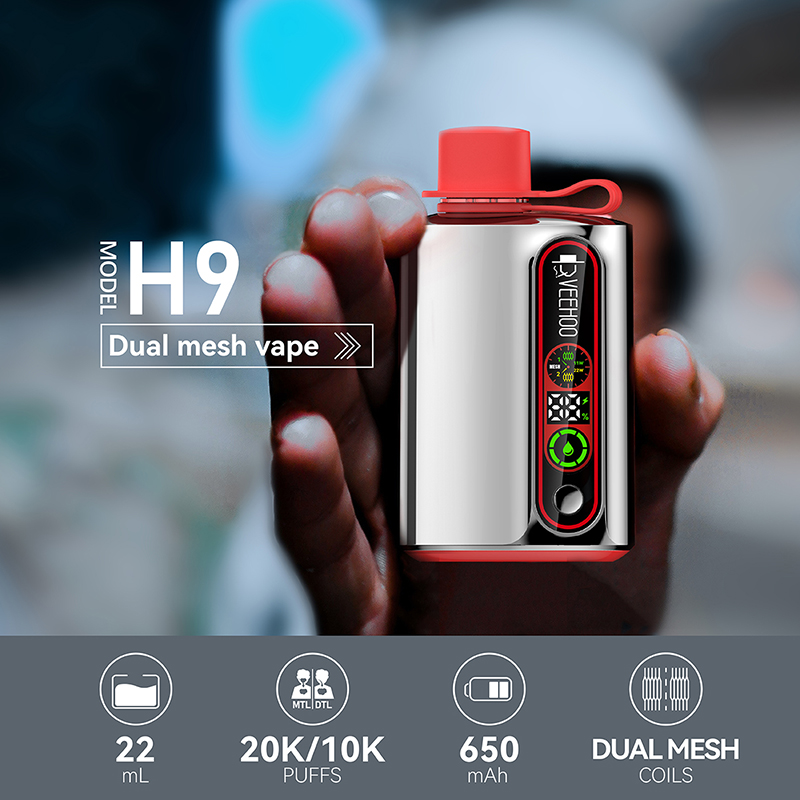Recently, multiple Russian media outlets and industry observers have simultaneously issued warnings: both domestically produced and imported e-cigarette products in Russia are experiencing an unprecedented “stockout wave.” From the capital to second- and third-tier cities, retail outlets are experiencing widespread shortages, disposable e-cigarette prices have skyrocketed, and some best-selling models have been forced off the shelves. This is not due to a single reason, but rather the result of the combined effects of rising compliance costs, tax adjustments, tightened border crossings, and the anticipated new round of regulatory legislation. A systematic review and in-depth reflection are warranted regarding the origins of this market upheaval, its long-term impact on consumers and the industry, and the advantages of brands that have maintained competitiveness amidst the turmoil (such as VEEHOO).
Let’s start with the most direct phenomenon. In the past two months, tobacco and e-cigarette retail stores in Moscow, St. Petersburg, and other major cities have seen “empty shelves.” Many disposable e-cigarettes or cartridges that were previously readily available are now difficult to restock in a short period, forcing some retailers to sell off their inventory at high prices. The industry generally attributes the stockouts to two main factors: First, upstream supply chains experienced customs and logistics bottlenecks at transit ports such as Kazakhstan, causing many bulk goods from China to be stranded, resulting in a sudden contraction in grey market imports. Second, the market is highly uncertain about the future direction of Russian regulation—from rumors of a complete ban to stricter tax and licensing requirements, many overseas manufacturers and distributors have postponed shipments to Russia, thus freezing supply. This dual shock of supply and expectations directly fueled the current stockout wave and price fluctuations.

Behind the stockouts lies a deeper logic: the rapid increase in compliance costs and tax burdens is changing the market ecosystem. In recent years, Russian authorities have continuously promoted tax reforms and regulatory upgrades for e-cigarettes. New consumption taxes, minimum price requirements, product labeling, and sales licenses have been proposed or implemented, leading to a sharp increase in the marginal cost of legal operation. Increased taxes and higher licensing thresholds have squeezed the profits of brands and retailers who previously relied on a low-profit, high-volume strategy. Many small manufacturers and intermediaries have chosen to exit the market or switch to grey market channels, which in turn has created an even larger underground market. According to statistics from industry research and monitoring agency Observer, under the pressure of taxation and compliance, the number of compliant companies has sharply decreased, while illegal and smuggling channels have become more active, further disrupting the legitimate supply chain and market price signals. Therefore, the stockouts are not a short-term accident, but rather a market reallocation resulting from structural regulatory and fiscal policy adjustments.
From a policy perspective, the pace of Russian regulation and legislative trends have exacerbated industry uncertainty. Over the past year, the State Duma and relevant departments have repeatedly discussed stricter licensing management of e-cigarette sales, restrictions on flavors, bans on online sales, and stricter penalties for violators. Some more radical proposals even suggested full retail licensing or, in extreme cases, stricter market intervention. Even though some proposals for a complete ban have not yet become law, the frequent discussions at the legislative and administrative levels have been enough to cause foreign manufacturers and chain distributors to reassess the risks of entering the Russian market, leading to cautious strategies such as postponing shipments or reducing supply, thus contributing to stockouts and product removals in the short term. It can be said that policy expectations themselves have become one of the most important risks on the supply side.

The direct consequences of stockouts first fall on consumers: those accustomed to disposable e-cigarettes or specific cartridge models face the predicament of being unable to purchase them, and some may be forced to turn to more expensive alternatives or unregulated channels, increasing consumption costs and health risks. Secondly, compliant retailers face significantly increased operational pressure—not only declining sales but also rising financial burdens from stockpiling inventory. Thirdly, public health goals may be negatively impacted: if compliant alternatives are difficult to obtain, while illegal and unlabeled products increase, regulatory objectives (such as protecting minors and controlling product safety) will be more difficult to achieve. In the long term, market concentration may increase due to policy cleanup, but this does not equate to a healthy market, especially when the underground economy expands to fill the gaps in formal supply.
In such a storm, some brands are able to adapt to new rules more quickly, optimize their supply chains, and maintain their market presence; others are forced to retreat. For those brands that remain competitive and have won consumer trust, their “positive aspects” deserve careful analysis. Taking VEEHOO as an example (as a representative e-cigarette brand in industry observation, its advantages have certain reference value), VEEHOO has several advantages in product design and brand operation: First, its emphasis on product quality and stability—including atomizer reliability, packaging and leak-proof design, and consistent flavor of e-liquid cartridges—ensures that these technical and quality controls make the brand more sought after by loyal users when supply is scarce. Second, its strong compliance awareness—emphasizing legal registration, labeling compliance, and transparent ingredient disclosure in multiple international markets helps maintain compliant sales channels when regulations tighten. Third, its diversified services and channels—the balance between online and offline channels, compliant domestic distribution, and after-sales system allow for alternative routes to mitigate supply disruptions when a single logistics channel is blocked. Fourth, its effective communication with consumers—building trust through education and risk warnings—reduces the likelihood of panic among users and their shift to illegal markets due to stockouts. It is precisely this investment in quality, compliance, and user relations that makes brands like VEEHOO more resilient in market fluctuations. This article is not a commercial recommendation for any brand, but rather points out which corporate characteristics are more likely to bring long-term competitiveness in a volatile market.

Faced with stockouts, both the industry and regulators need to adopt pragmatic and prudent response strategies. For regulators, a balance should be struck between maintaining public health and avoiding drastic market disruption: on the one hand, continuing to advance necessary compliance, tax, and licensing systems to achieve public health outcomes; on the other hand, a reasonable transition period should be set, a clear implementation timeline should be established, and cross-departmental coordination should be strengthened to prevent abrupt changes from causing the collapse of legitimate supply chains and the infiltration of illicit markets. For businesses, optimizing compliance systems, establishing more diversified and localized procurement channels, improving inventory and cash flow management capabilities, and increasing consumer education on legitimate products and after-sales guarantees are realistic paths to reduce systemic risks. At the consumer level, they should be reminded to avoid turning to products of unknown origin, pay attention to legitimate channels and product labeling, and understand the reasons for short-term price fluctuations and supply shortages to avoid taking unnecessary risks to their health and safety.
Finally, from a longer-term perspective, this stockout wave triggered by compliance and tax system adjustments may spur a profound restructuring of the industry. On the one hand, regulation will gradually “cleanse” the market into a more controllable and compliant structure, which is conducive to achieving long-term public health goals. On the other hand, the short-term expansion of the gray market and consumer substitution behavior also remind us that policy design must consider implementation costs, market transition, and consumer behavior; otherwise, well-intentioned regulations may bring unexpected side effects. For brands, only by making compliance, quality, and customer service their core competitiveness can they survive in an environment of frequent rule changes. For society, this shortage is a vivid lesson about the relationship between market resilience, regulatory pace, and public health, worthy of deep reflection and joint improvement by all stakeholders.
Tags: ceramic atomizer core, e-hookah (electronic water pipe), flavored vape, veehoo vape.
